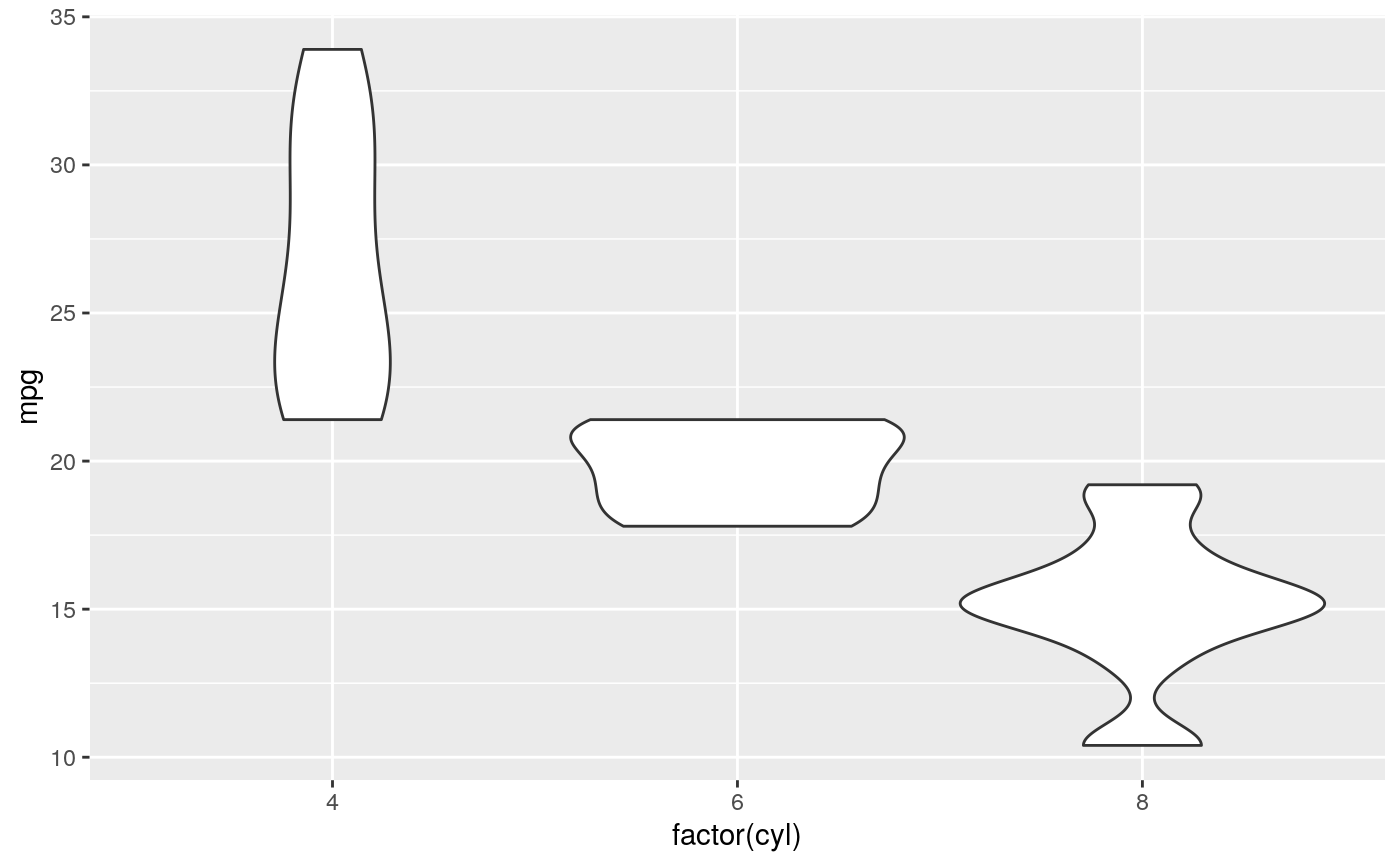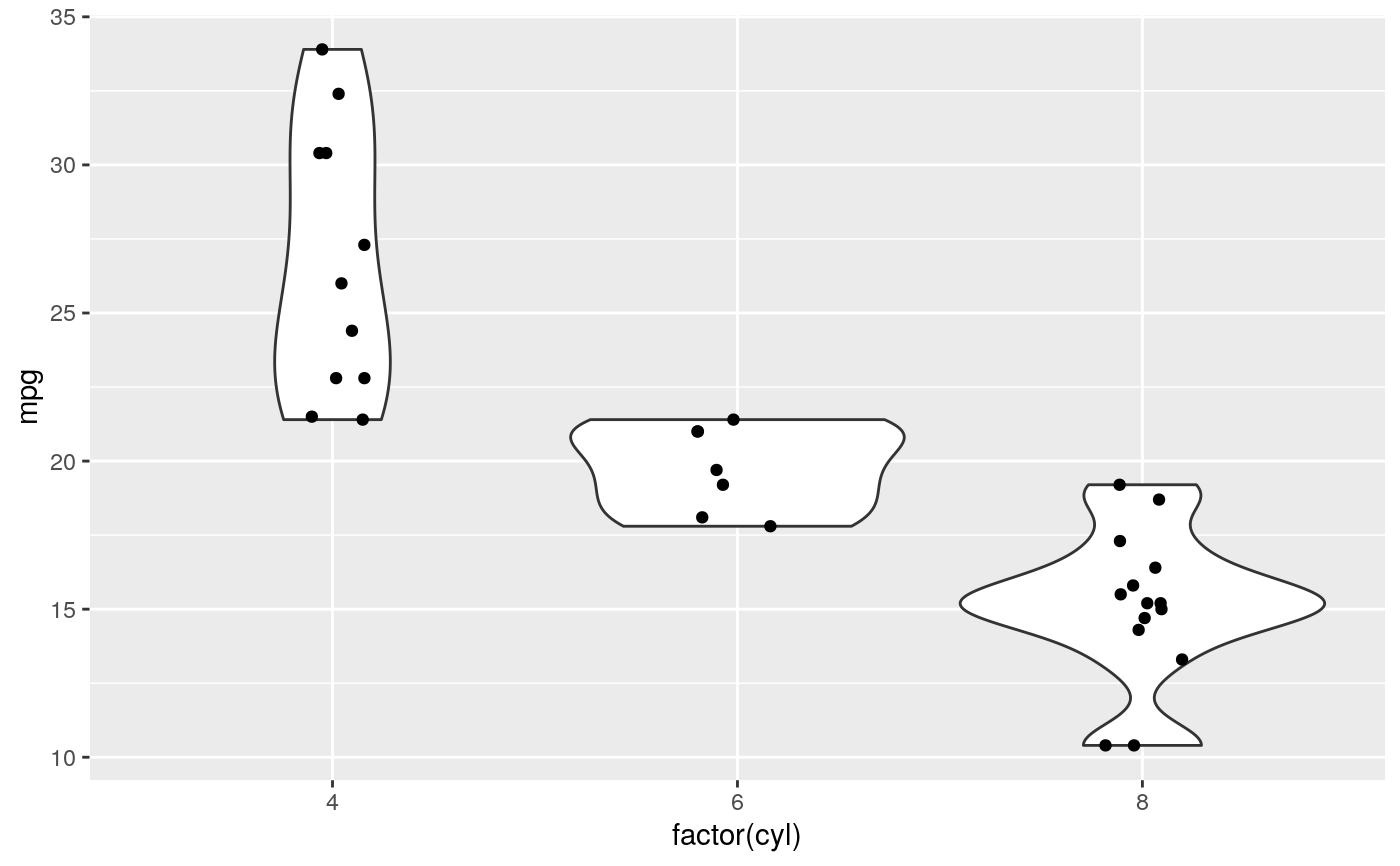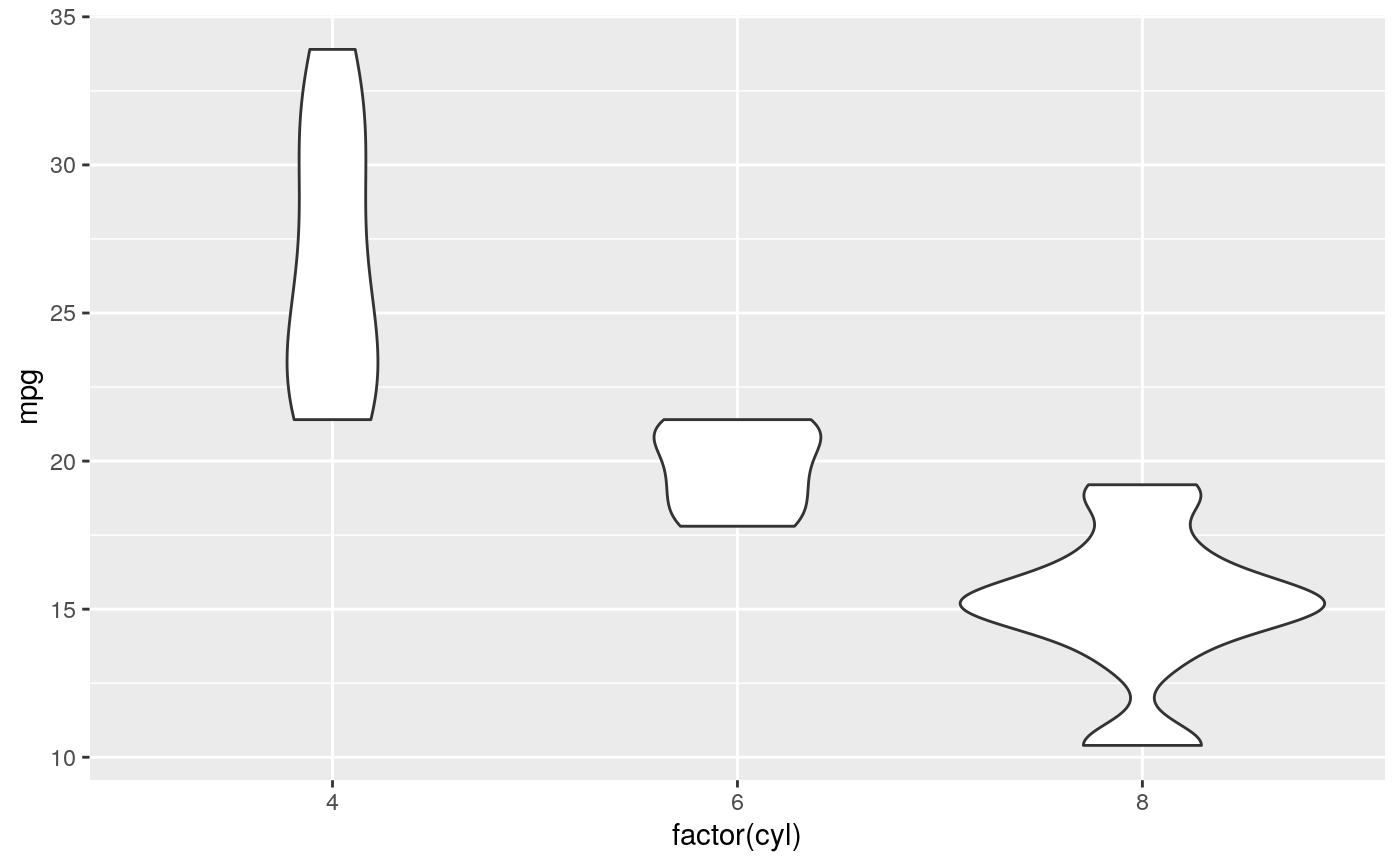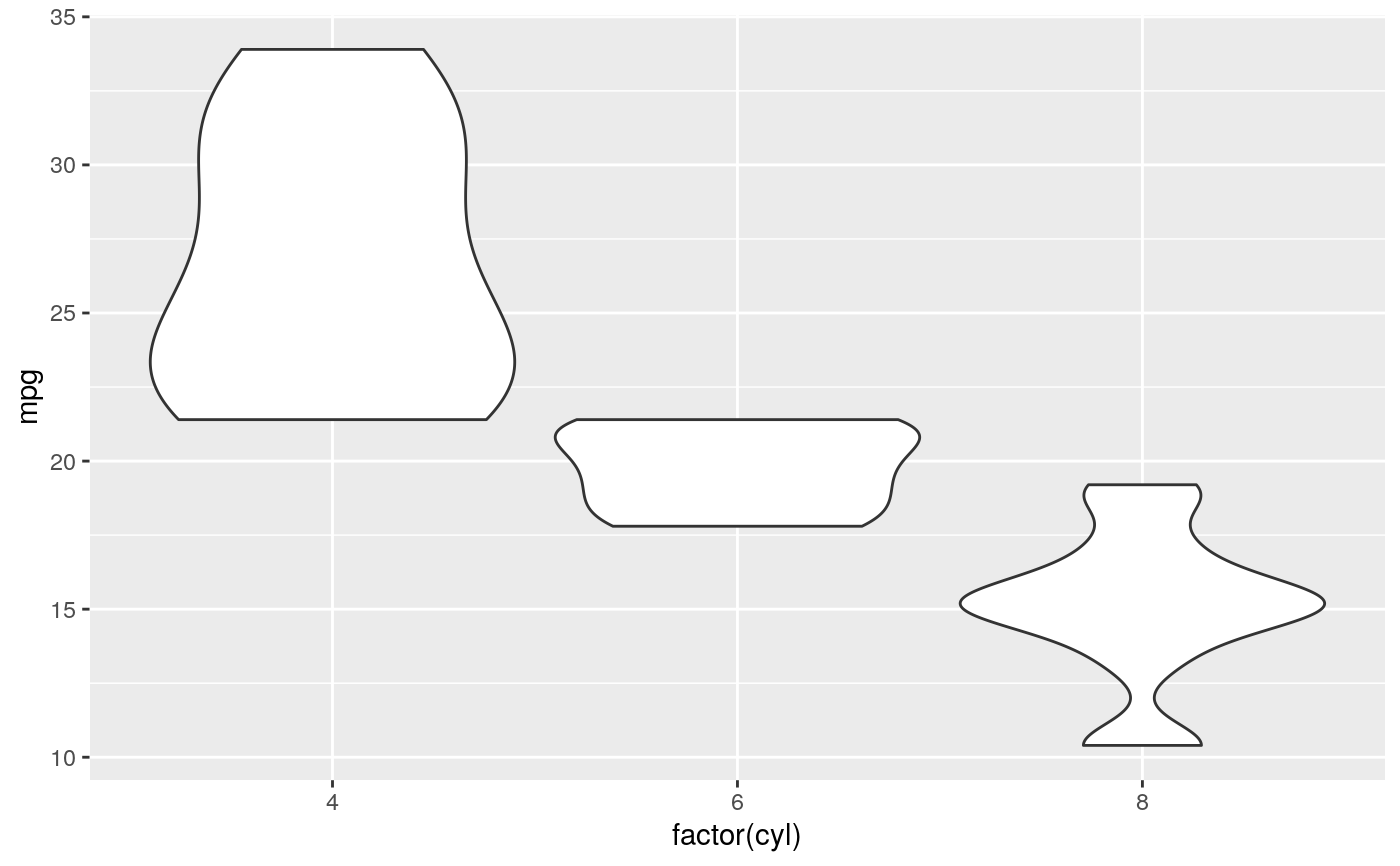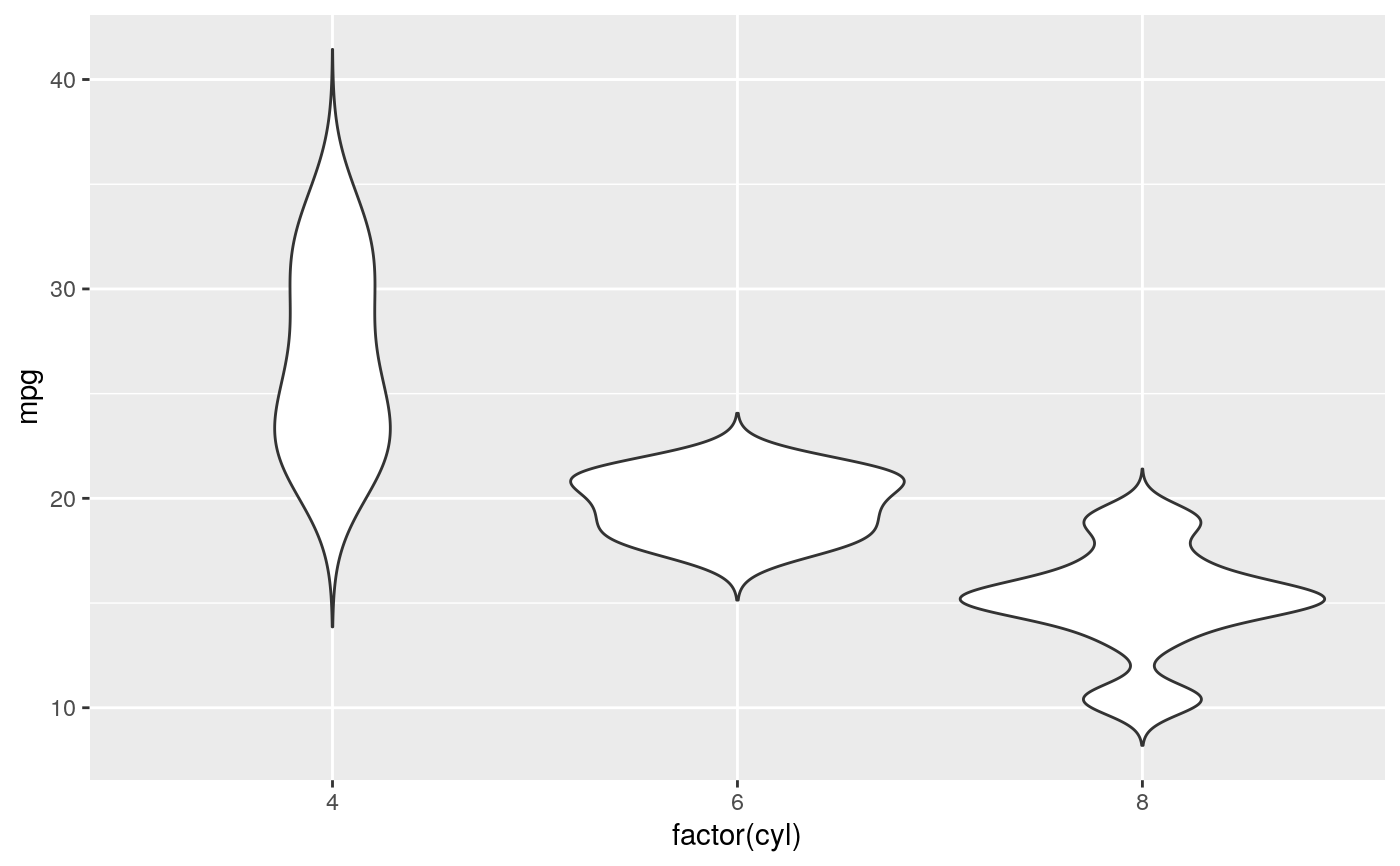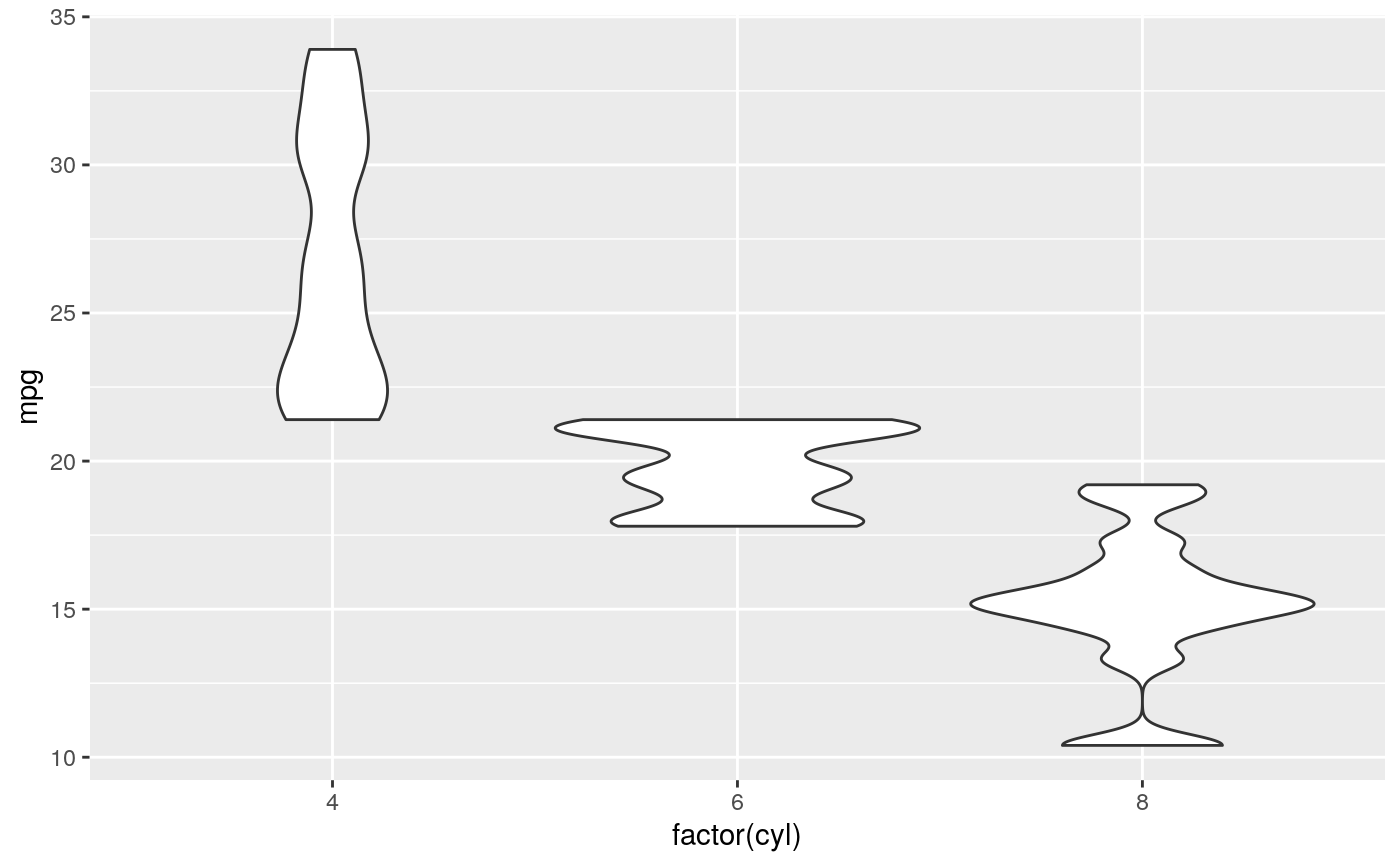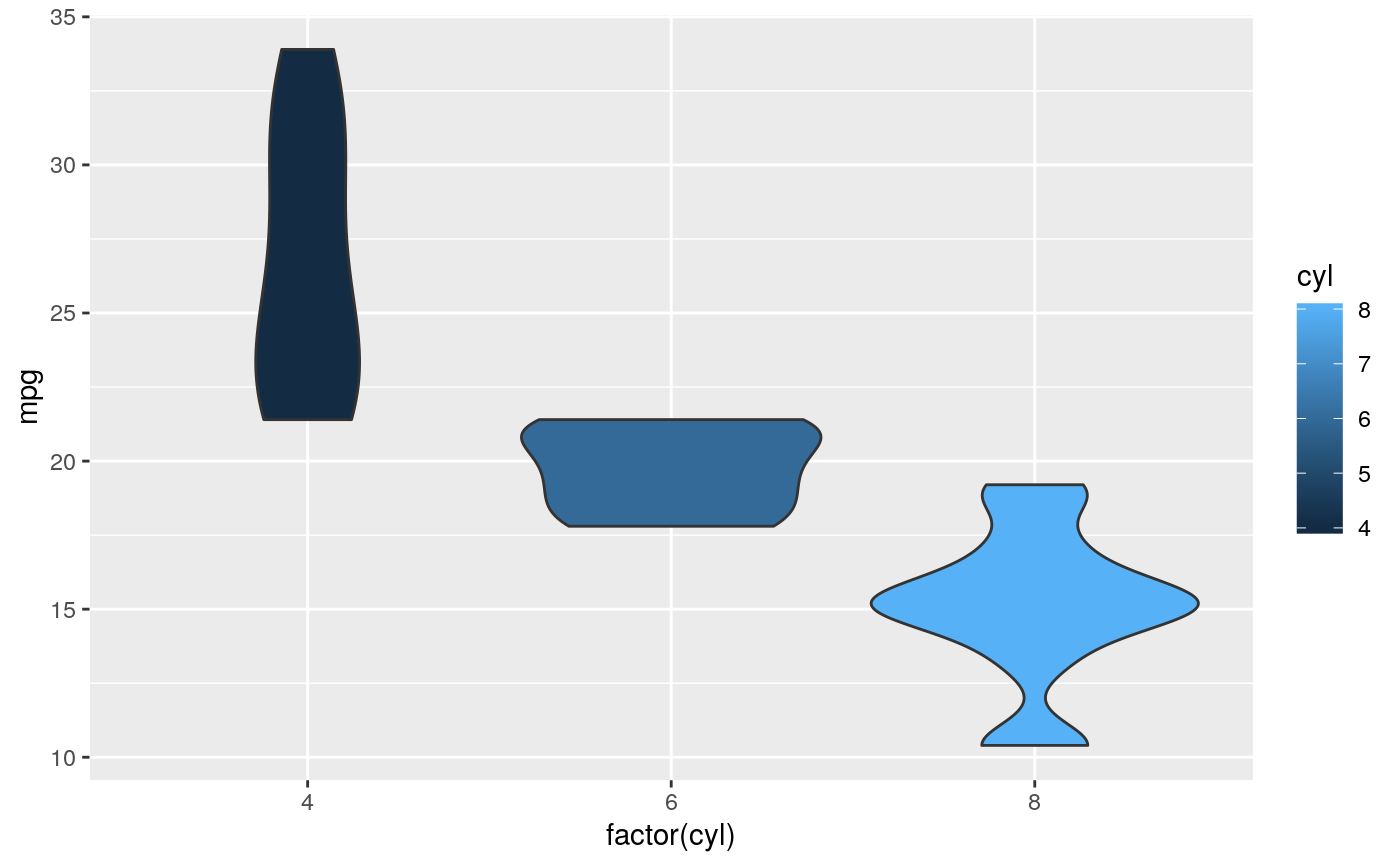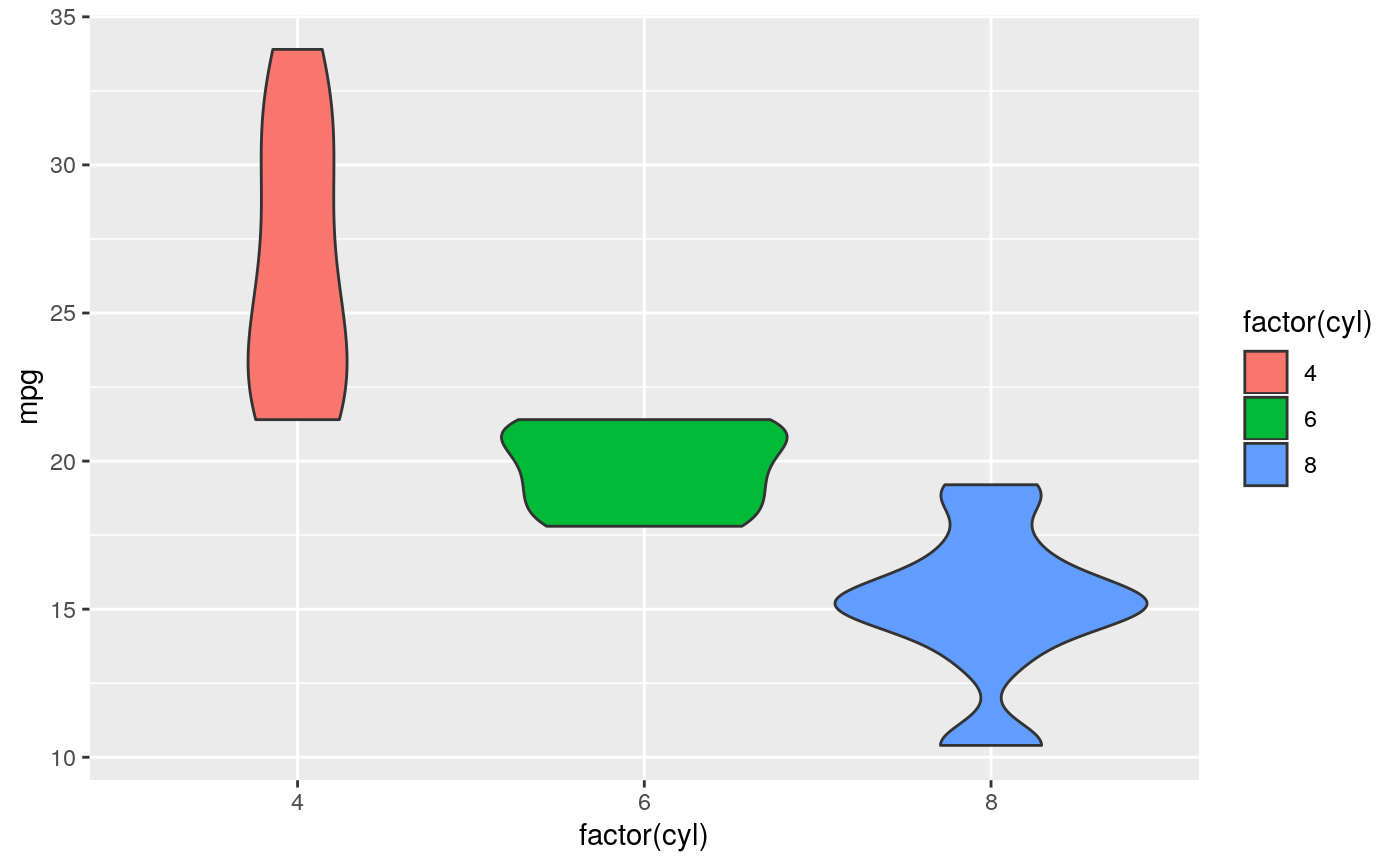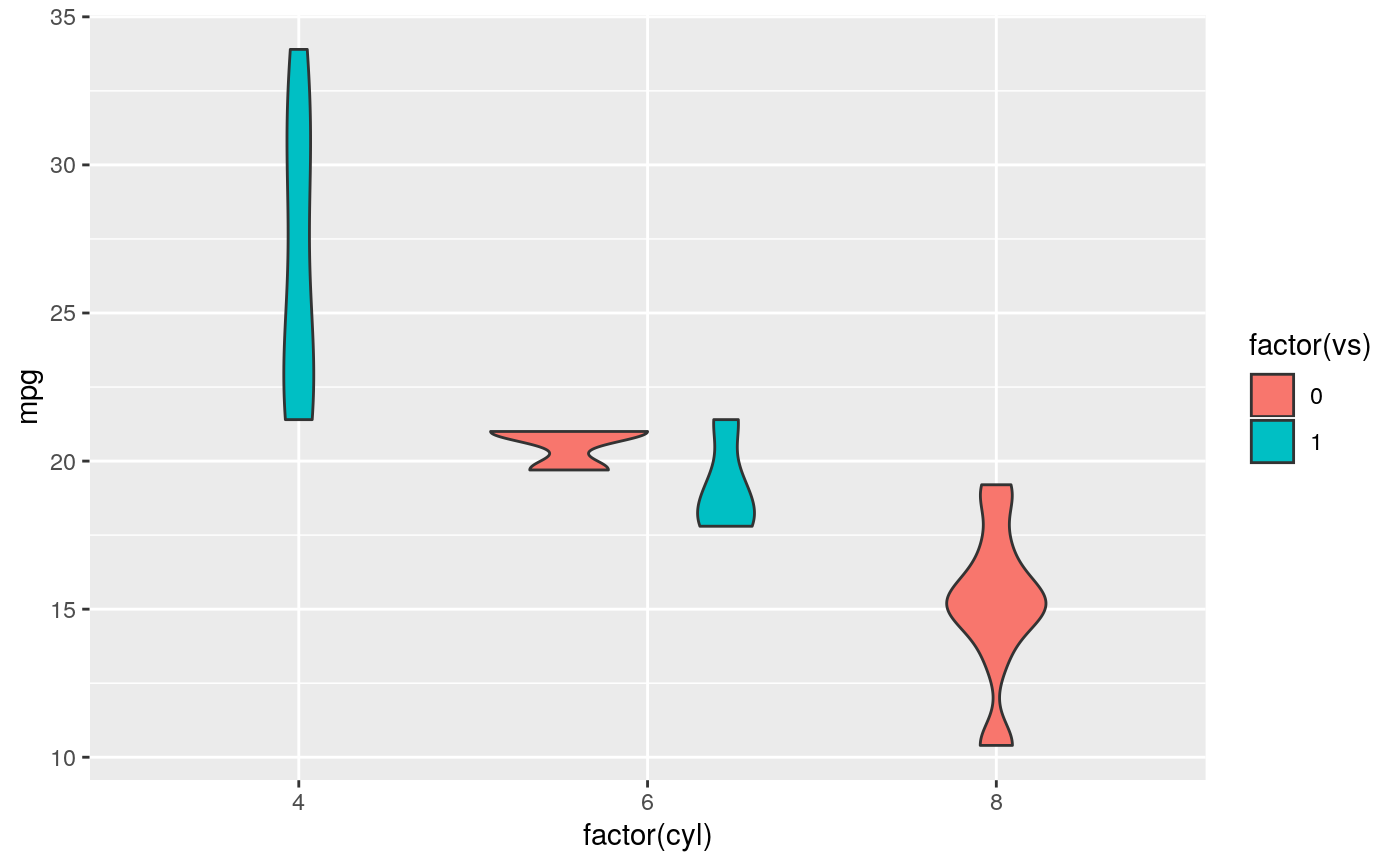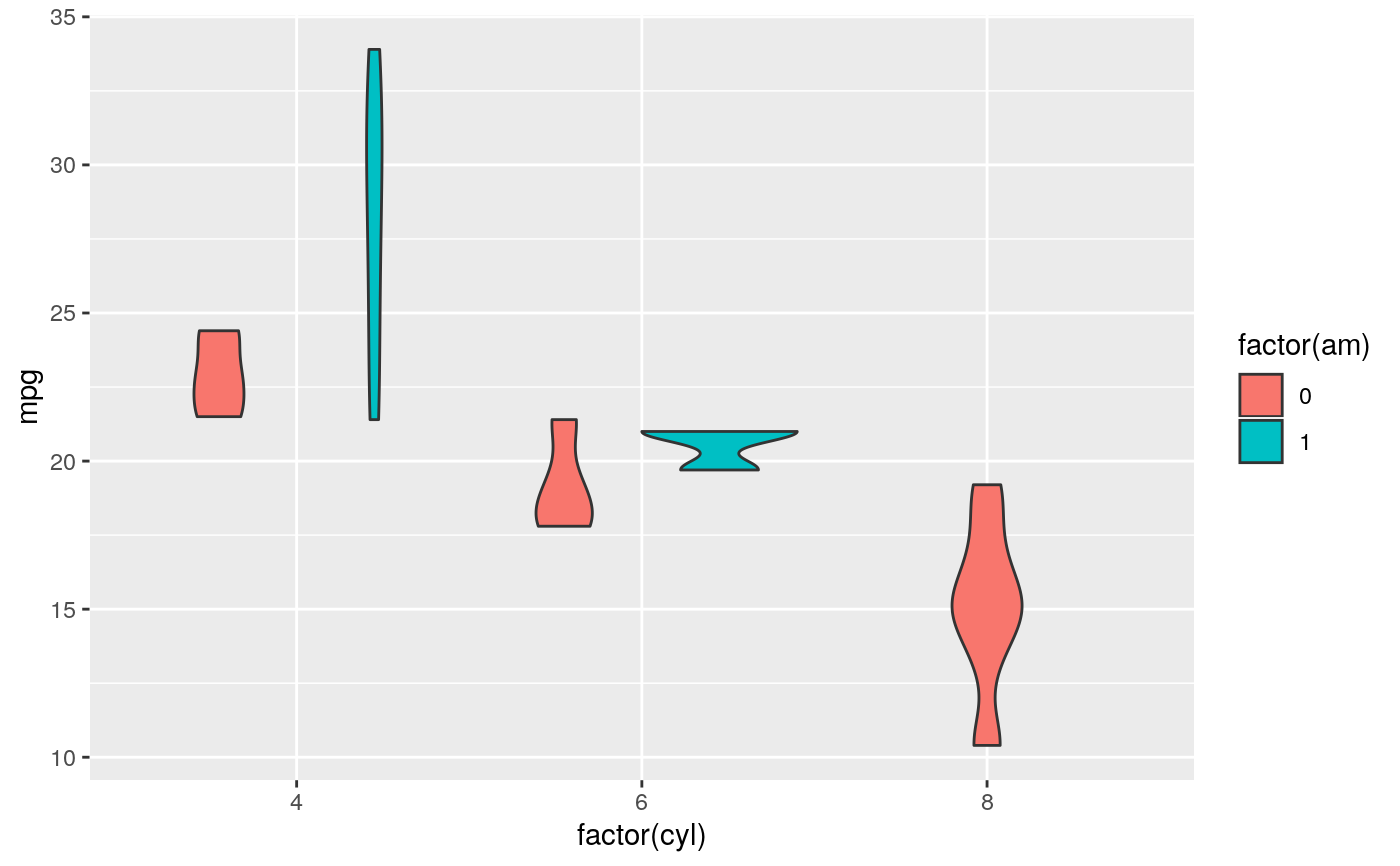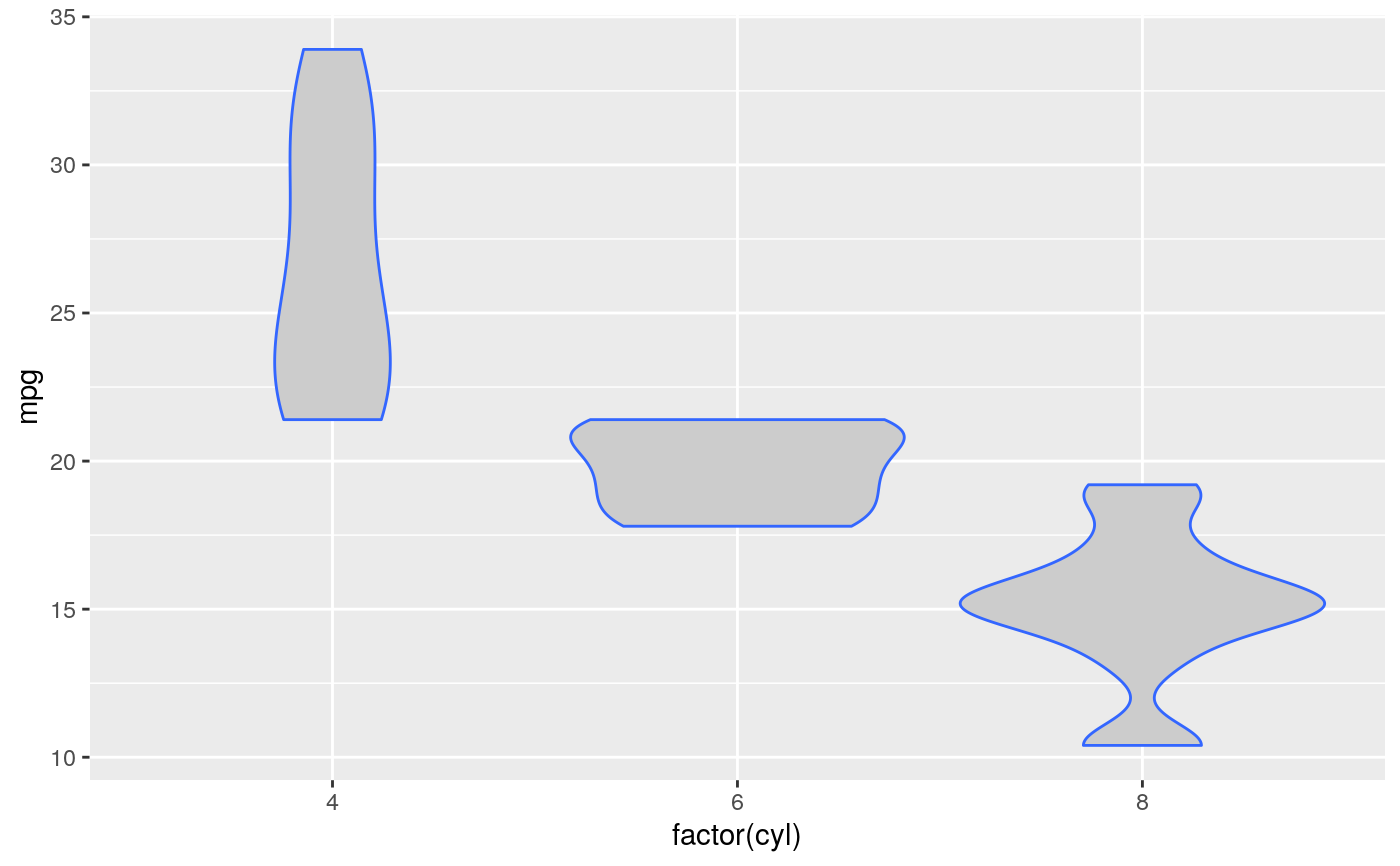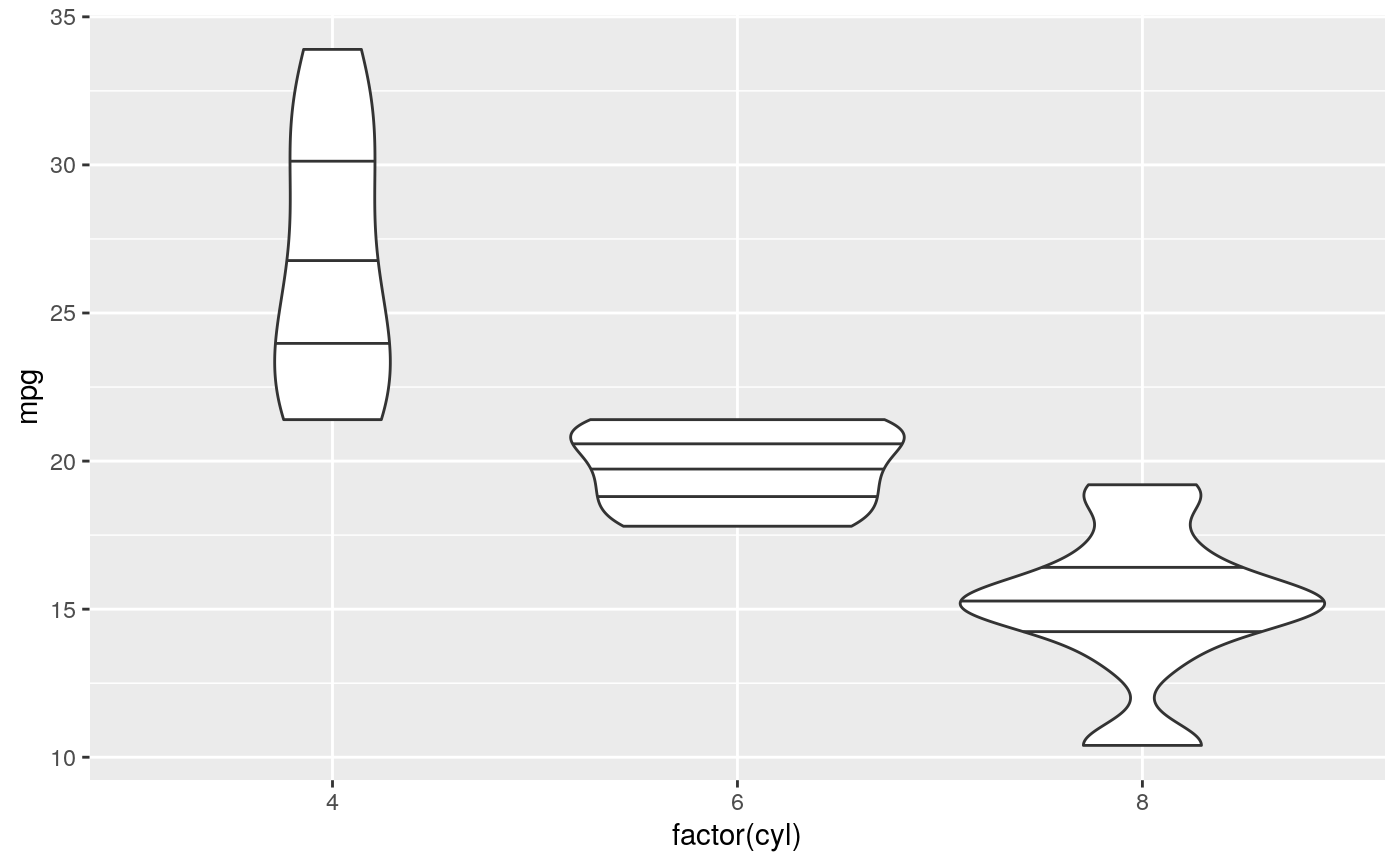A violin plot is a compact display of a continuous distribution. It is a
blend of geom_boxplot() and geom_density(): a
violin plot is a mirrored density plot displayed in the same way as a
boxplot.
geom_violin(mapping = NULL, data = NULL, stat = "ydensity", position = "dodge", ..., draw_quantiles = NULL, trim = TRUE, scale = "area", na.rm = FALSE, show.legend = NA, inherit.aes = TRUE) stat_ydensity(mapping = NULL, data = NULL, geom = "violin", position = "dodge", ..., bw = "nrd0", adjust = 1, kernel = "gaussian", trim = TRUE, scale = "area", na.rm = FALSE, show.legend = NA, inherit.aes = TRUE)
Arguments
| mapping | Set of aesthetic mappings created by |
|---|---|
| data | The data to be displayed in this layer. There are three options: If A A |
| position | Position adjustment, either as a string, or the result of a call to a position adjustment function. |
| ... | Other arguments passed on to |
| draw_quantiles | If |
| trim | If |
| scale | if "area" (default), all violins have the same area (before trimming the tails). If "count", areas are scaled proportionally to the number of observations. If "width", all violins have the same maximum width. |
| na.rm | If |
| show.legend | logical. Should this layer be included in the legends?
|
| inherit.aes | If |
| geom, stat | Use to override the default connection between
|
| bw | The smoothing bandwidth to be used.
If numeric, the standard deviation of the smoothing kernel.
If character, a rule to choose the bandwidth, as listed in
|
| adjust | A multiplicate bandwidth adjustment. This makes it possible
to adjust the bandwidth while still using the a bandwidth estimator.
For example, |
| kernel | Kernel. See list of available kernels in |
Aesthetics
geom_violin() understands the following aesthetics (required aesthetics are in bold):
xyalphacolourfillgrouplinetypesizeweight
Learn more about setting these aesthetics in vignette("ggplot2-specs").
Computed variables
- density
density estimate
- scaled
density estimate, scaled to maximum of 1
- count
density * number of points - probably useless for violin plots
- violinwidth
density scaled for the violin plot, according to area, counts or to a constant maximum width
- n
number of points
- width
width of violin bounding box
References
Hintze, J. L., Nelson, R. D. (1998) Violin Plots: A Box Plot-Density Trace Synergism. The American Statistician 52, 181-184.
See also
geom_violin() for examples, and stat_density()
for examples with data along the x axis.
Examples
# Scale maximum width proportional to sample size: p + geom_violin(scale = "count")# Scale maximum width to 1 for all violins: p + geom_violin(scale = "width")# Default is to trim violins to the range of the data. To disable: p + geom_violin(trim = FALSE)# Use a smaller bandwidth for closer density fit (default is 1). p + geom_violin(adjust = .5)# Add aesthetic mappings # Note that violins are automatically dodged when any aesthetic is # a factor p + geom_violin(aes(fill = cyl))# Set aesthetics to fixed value p + geom_violin(fill = "grey80", colour = "#3366FF")# Scales vs. coordinate transforms ------- if (require("ggplot2movies")) { # Scale transformations occur before the density statistics are computed. # Coordinate transformations occur afterwards. Observe the effect on the # number of outliers. m <- ggplot(movies, aes(y = votes, x = rating, group = cut_width(rating, 0.5))) m + geom_violin() m + geom_violin() + scale_y_log10() m + geom_violin() + coord_trans(y = "log10") m + geom_violin() + scale_y_log10() + coord_trans(y = "log10") # Violin plots with continuous x: # Use the group aesthetic to group observations in violins ggplot(movies, aes(year, budget)) + geom_violin() ggplot(movies, aes(year, budget)) + geom_violin(aes(group = cut_width(year, 10)), scale = "width") }#>#> Warning: there is no package called ‘ggplot2movies’# }
